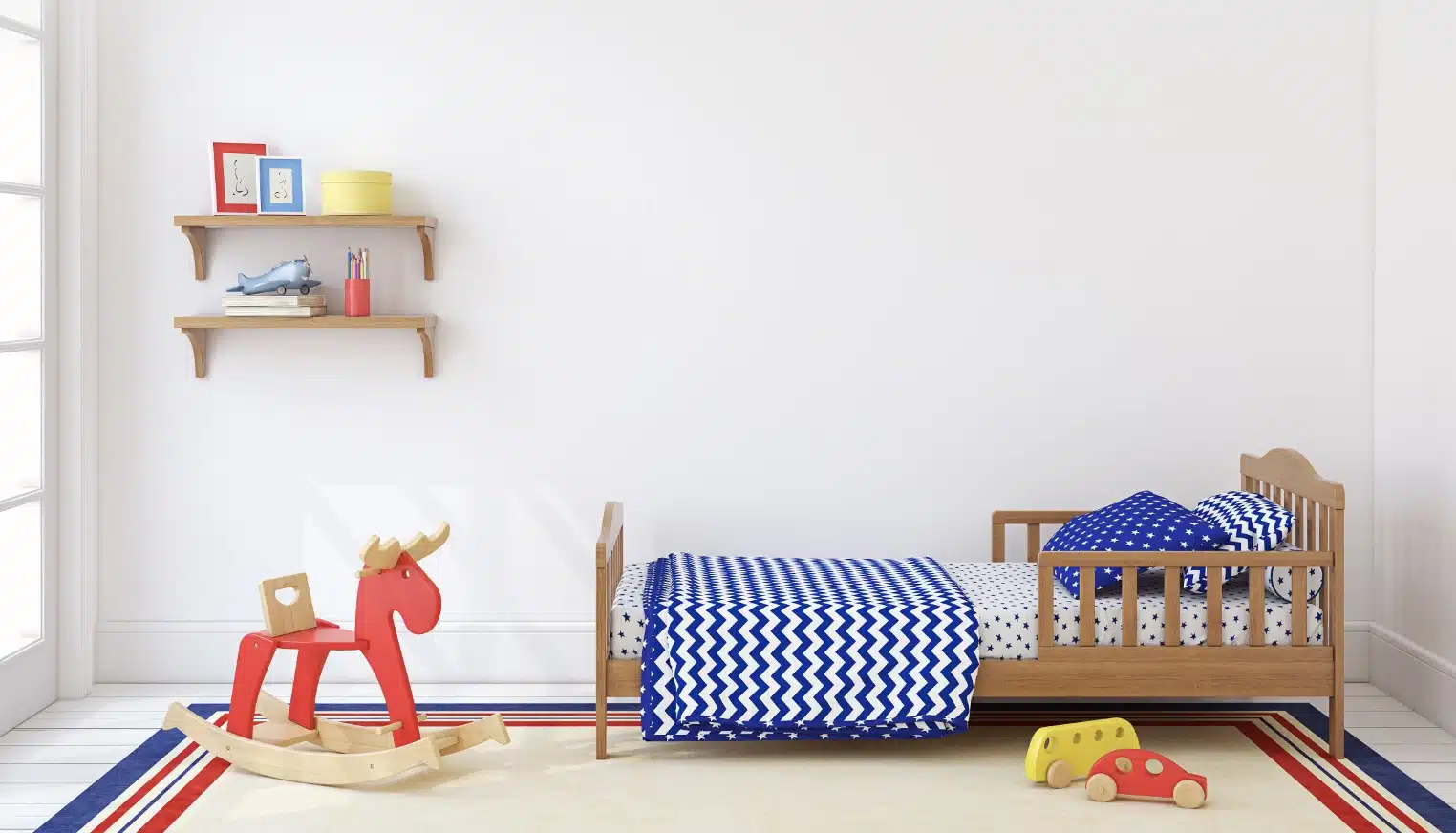By Angela Kurdzhukyan MS, OTR/L
A common question parents ask is whether or not their child is ready to switch to a toddler bed. Although toddlers around 3 years old should already be transitioned, it is important to note that age is not a tell-all factor when deciding if a child is ready. The various factors contributing to a child’s readiness may explain why there is a wide range in the average age children transition to a toddler bed (around 18 months – 3.5 years).
One factor to consider before making the switch is ensuring that the child is developmentally ready. That may include their awareness of what sleep is, their understanding of the physical boundaries of the bed, and being able to understand that the bed is theirs to remain in for the duration of the night. For example, children who do not have self-control are not developmentally prepared for the change as they may try to get out of bed or out of their room during the night. Children may even go into their parent’s room and try to sleep in their parents’ bed.
Another sign that may help identify when to change beds is when the child’s chest is higher than the crib railing or when they frequently try to climb out. Most cribs can be lowered throughout the child’s growth however when the crib mattress has been lowered all the way and the child’s chest is higher than the railing this is a sign for transitioning and is also a safety concern. Children grab and lean over the edge of their crib frequently. Having grown taller and leaning over the edge creates an increased distribution of weight overhead. This shift in weight may lead to a child flipping over/falling.
Children with older sibling may also start independently demonstrating an interest in a “big kid” bed. If a child demonstrates interest to have a bed like their older sibling this is a positive sign that the child is emotionally and cognitively ready for the change. A tip for parents who do have a child with an older sibling and are unsure of the change is to trial having the child sleep in their sibling’s bed when their sibling is not home (for example if the sibling is staying at grandma’s house).
If a child is potty trained this may also be a reason why the child would be ready for a new bed. One of the simplest explanations includes allowing the child to have easy access to getting to the bathroom during the night.
After you have ensured that the child is developmentally ready a few tips can help make the transition smoother:
- Keep the new bed in the same location as their crib/old bed
- Go shopping for the new bed with the child
- Choose a bed that sits low to the floor
- Stick to the same bedtime routine as the crib
- Don’t allow for frequent changes such as allowing them to come to your bed
- Reinforce good behavior
- Add safety rails as necessary
Transitioning beds is a big change for children and may take them some time to adjust. With that being said, changing beds is not recommended if the child is also going through other drastic changes such as starting daycare/preschool, potty training, moving homes, or having a new sibling.
Signs that the child may not be prepared include a difficulty of falling or staying asleep after the switch has been made. Additionally, if the child does not demonstrate most of the signs, then they may require increased time, and that’s okay!
Here is an example of a successful transition that occurred with the support of an occupational therapist:
Anthony is a 34-month-old boy who currently sleeps in a large crib. His mom is curious to find out if he is ready to transition to a toddler bed. She wants to save room in the house by buying a bunk bed as Anthony and his brother share a room. Anthony is not yet potty trained but mom reports that he has shown an interest to have a bed like his older brothers. Mom was educated to trial having Anthony sleep in his brother’s bed when his brother is sleeping over at his grandparents’ home. Mom then reported that Anthony remained in the bed throughout the night and did not leave the bed or the room. Anthony helped mom pick out the new bunkbed and watched his dad assemble it. Additionally, mom ensured that the lower bunk bed where Anthony will be sleeping is low to the floor. For final touches, mom added railing, cushioned the bottom of the bed, and blocked access to the steps for the top bunk. Since his transition Anthony is reported to be sleeping well and feeling like a big kid just like his brother.




